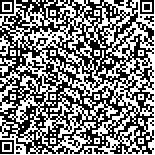| 摘要: |
| 全球新冠肺炎疫情持续蔓延背景下,建
成环境对大流行病传播风险的空间应对已成为
当前城乡规划领域关注的重点。为揭示中观尺度
城市建成环境对新冠肺炎空间分布的影响机制,
研究以2020年武汉中心城区疫情集中爆发社区及
其街道为基本研究单元,立足疫情传播特征借
助ArcGIS和Pycharm平台对社区及街道两类数
据进行提取和计算,基于克里金插值和语义分
割模型获取街道开敞度、交通拥堵度、土地利用
混合度、容积率等9个建成环境特征,并在此基
础上,利用地理加权回归模型构建疫情空间风
险指标体系。研究表明:一、社区及街道建成环
境要素与疫情空间风险紧密相关,语义分割模型
在街道建成环境要素测度上具有方法优势;二、
存在4个通过稳健性检验的显著影响要素,其中
道路密度、土地利用混合度、交通拥堵程度与疫情风险分布呈显著正相关,路网宽度和疫情风险分布呈显著负相关;三、地理加权回归模型相较
于OLS模型充分地考虑了各因素的空间解释,通过回归系数分析了不同风险指标的空间效应,所构
建的疫情空间风险评价体系指出传染病防治规划策略宜结合社区及街道等多种尺度的建成环境要
素。本研究结果为中观尺度城市建成环境下传染病防治的空间对策制定提供依据。 |
| 关键词: 新冠肺炎 中观尺度城市建成环境 疫情空间风险 语义分割 地理加权回归 |
| DOI:10.13791/j.cnki.hsfwest.20230206 |
| 分类号: |
| 基金项目:中央高校基本科研业务费专项资金项目(JS2020H
GXJ0021);合肥工业大学2021年省级大学生创新创
业训练计划项目(S202110359208) |
|
| Analysis of the Impact of Urban Built Environment on the Spatial Risk of Epidemics fromthe Perspective of Mesoscale |
|
WANG Lin,ZHANG Yecheng,YAO Weixin,PENG Chenxi,FENG Biying
|
| Abstract: |
| The outbreak of the COVID-19 pandemic has presented unprecedented challenges to the
world. Governments around the world have implemented various measures to control the spread of
the virus, including social distancing, lockdowns, and travel restrictions. However, the pandemic
continues spreading, and the built environment’s response to the spread of the epidemic has become
a focus of attention in the field of urban and rural planning. The built environment plays a crucial
role in the spread of infectious diseases. In the context of new data and technology, it is possible to
explore the spatial risk of infectious diseases in urban built environment by using high-resolution
street view images and comprehensive geographic data.
The research aims to reveal the mechanism by which the middle-scale urban built environment
influences the spatial distribution of COVID-19 in the city. To achieve this goal, we use communities
and streets in the central urban area of Wuhan, where the COVID-19 outbreak was concentrated
in 2020, as the basic research units. The built environment is defined as the spatial environment
constructed and configured to meet human activity needs, including land use form, transportation
infrastructure, and urban road design, as well as non-physical factors such as street openness and
dynamic traffic congestion that partially affect population aggregation and urban ventilation. The
study believes that the main sources of urban epidemic transmission at the mesoscopic scale come
from two aspects: the mobility of the urban population and the spatial form indicators that affect
urban airflow.
ArcGIS and Pycharm platforms are used to obtain and calculate two types of data: community
data and street data, through visual semantic segmentation models and spatial statistical methods.
These data include street openness, traffic congestion, land use combinations, and land-to-floor
ratio. Kriging interpolation is utilized to obtain the spatial continuous distribution of these features.
Data on the number of COVID-19 cases in each community and street are employeed, as well as an
interpolation model to characterize the spatial risk of the epidemic based on the distribution data of
COVID-19 patients. A geographically weighted regression model is used to analyze the relationship
between built environment characteristics and spatial distribution of COVID-19 cases. The results
of the geographically weighted regression model and the Ordinary Least Squares (OLS) model are
compared to accurately evaluate the spatial effects of different risk indicators.
The research shows that the built environment factors of communities and streets are closely
related to the spatial risk of COVID-19. Firstly, the middle-scale urban built environment combines
community and street built environment elements, and big data and machine learning can objectivelymeasure street built environment features related to epidemic spread at a finer spatial scale. Secondly, the spatial risk of the epidemic is positively correlated
with road density, land use mix, and traffic congestion, and negatively correlated with the width of the road network. Moreover, the impact of traffic
congestion and land use mix on the spatial risk of the epidemic shows significant spatial heterogeneity, and the impact on the spatial risk of the epidemic
is most significant. Finally, compared with OLS model, the geographically weighted regression model fully considers the spatial interpretation of various
factors, and analyzes the spatial effects of different risk indicators through regression coefficients.
The research is of great significance to the planning strategy of infectious disease prevention and control. Firstly, the modern community under the
model of “small block and dense road network” is worth popularizing. The setting of road density and width will affect the communication frequency of
residents, corresponding to different epidemic infection risks. Contrary to intuition, the epidemic risk has a high negative correlation in small-scale modern
communities, and the model of “small block and dense road network” may form a good road density and width grade ratio, and thus reducing the risk of
epidemic infection. Secondly, compared with the city-level business circle, the land mixed use mode of community life circle is more worth popularizing.
The positive correlation coefficient of land use mixing degree is mainly concentrated in the core business district of the city, while the land mixing in the
community life circle presents more negative correlation coefficients. The centralized business circle on the city scale is more likely to lead to the multi-
chain spread of the epidemic, and the local centralized land mixed model is more conducive to reducing the risk of epidemic spread than the land model of
the urban core business circle. The high positive correlation coefficient of traffic congestion degree in the core business district of the city also shows that
decentralized development has more advantages in reducing the risk of epidemic spread. The results of the spatial risk assessment system of COVID-19
city constructed in this study show that different scale building environmental factors, such as communities and streets, should be included in the infectious
disease prevention and control planning strategy. |
| Key words: COVID-19 Middle View Scale of Urban Build Environment Spatial Risk of Epidemic Semantic Segmentation Geographical Weighting
Regression |


